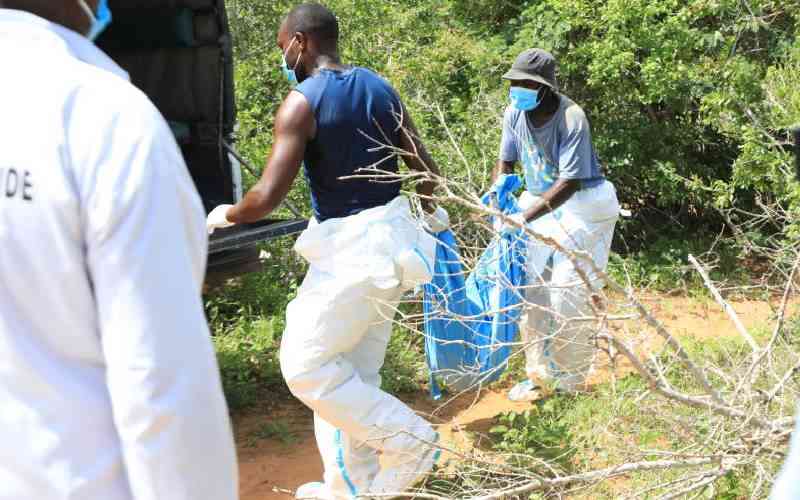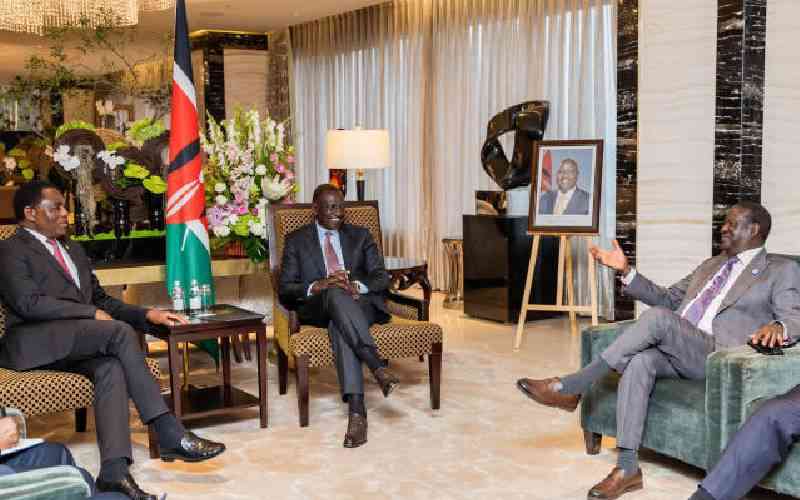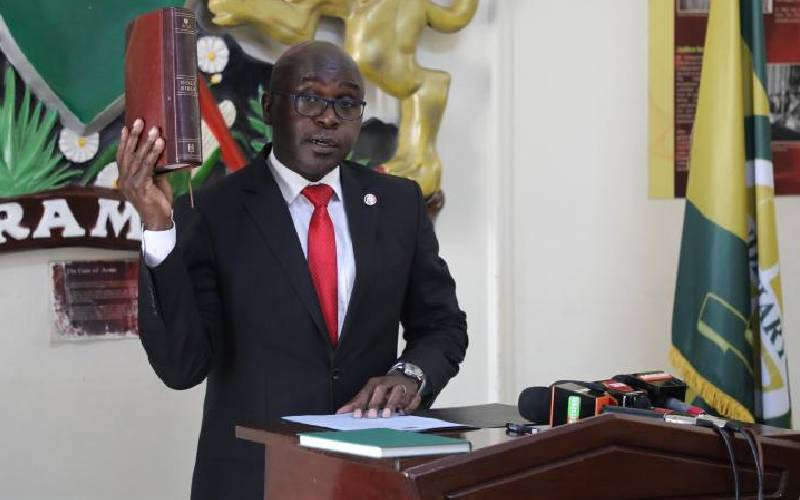Justice Aaron Ringera says progress in the war on corruption shouldn’t be measured by "the body count" — the number of convictions secured by State agents as a result of investigations by Kenya Anti-Corruption Commission (KACC).
The commission’s success, its Director-General suggests, lies in preventing high-level graft through "pro-active detection of corruption and economic crimes to ‘disrupt’ corrupt activities".
He also touts its track record in recovering or getting compensation for public property.
There is some truth in this argument: KACC’s presence ‘on the beat’, in much the same fashion as street patrols by uniformed police officers, helps reduce the commission of new crimes.
Speedy investigation of whistleblower’s complaints (4,844 last year) can also pre-empt the loss of money from public coffers.
Also, by achieving Sh3.8 billion worth of asset recoveries, KACC has made more progress in one financial year than in all the years since it was established.
However, KACC’s mandate, as spelt out in the Anti-Corruption and Economic Crimes Act, also covers law enforcement, not just graft prevention and public education. The tracing and recovery of corruptly or illegally acquired assets must be complemented and encouraged by high-profile successes in court.
Sure, we must continue to celebrate the fact that public awareness of what constitutes corruption and economic crimes has improved. This means fewer resources are wasted.
Results
But when it comes to crimes where no recoveries have been made or are possible — a legacy of the shameless looting that characterised the Kanu kleptocracy and impunity in the first five years after its demise — there is really no other way to measure progress but in criminal prosecutions and convictions.
While the commission has no power to prosecute, its batting average in prompting those who do to act indicates it must work to improve the quality of its investigations. Only a little more than half of 111 reports forwarded to the Attorney-General’s office in the 2007/08 financial year resulted in criminal cases instituted in court. Does this reflect weaknesses in its investigative capacity that could have a significant bearing on other measures it takes to fight graft?
Even an emphasis on prevention must have a ‘body count’, albeit of a different sort. Where a complaint is credible but doesn’t end up in criminal court, KACC often recommends "administrative action". The interdictions, firings, demotions and so on that result must be monitored.
If, for example, investigations into corruption of the Ministry of Health headquarters — a subject on which many questionable deals were reported by a recent audit of procurement systems — only resulted in one notable case, can KACC assure taxpayers the notorious Afya House cartels have been disbanded through administrative action?
Without keeping track of such ‘body counts’ on cases that don’t result in prosecutions, how is KACC to know its prevention efforts are working?
We are encouraged that KACC filed 100 civil suits for recovery of public assets or compensation.
Stay informed. Subscribe to our newsletter
Root and branch
Some Sh860 million is riding on the outcome of these cases. It has also sought orders to freeze assets in these and other cases.
But the usefulness of these orders, which bar transfer of suspect property for six months, depends on KACC’s ability to complete investigations quickly.
With completions running at a tenth of new complaints, KACC will soon be sitting on a pile of pending cases. There is a danger of cases being "closed for lack of evidence" or assets targeted for recovery being lost where probes are not completed in good time.
Even without the Sh2.9 billion Grand Regency Hotel, this year’s recoveries are nine times last years. For that KACC deserves accolades. But to get at corruption root and branch, the commission must prove success in not just dispossessing looters, but also in breaking their networks and getting the worst of them locked up as guests of the State.
 The Standard Group Plc is a
multi-media organization with investments in media platforms spanning newspaper
print operations, television, radio broadcasting, digital and online services. The
Standard Group is recognized as a leading multi-media house in Kenya with a key
influence in matters of national and international interest.
The Standard Group Plc is a
multi-media organization with investments in media platforms spanning newspaper
print operations, television, radio broadcasting, digital and online services. The
Standard Group is recognized as a leading multi-media house in Kenya with a key
influence in matters of national and international interest.
 The Standard Group Plc is a
multi-media organization with investments in media platforms spanning newspaper
print operations, television, radio broadcasting, digital and online services. The
Standard Group is recognized as a leading multi-media house in Kenya with a key
influence in matters of national and international interest.
The Standard Group Plc is a
multi-media organization with investments in media platforms spanning newspaper
print operations, television, radio broadcasting, digital and online services. The
Standard Group is recognized as a leading multi-media house in Kenya with a key
influence in matters of national and international interest.








